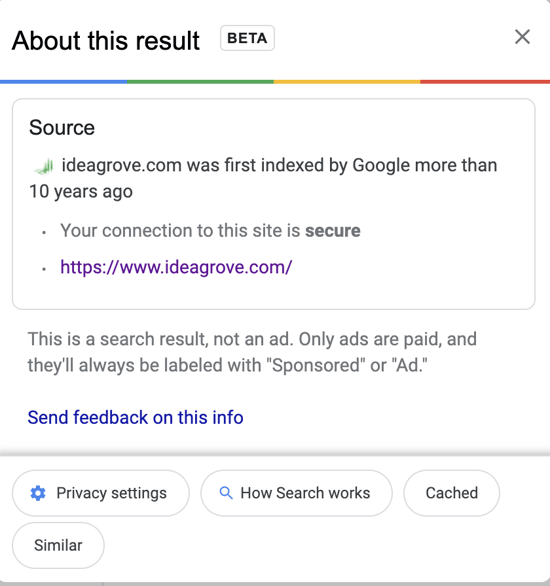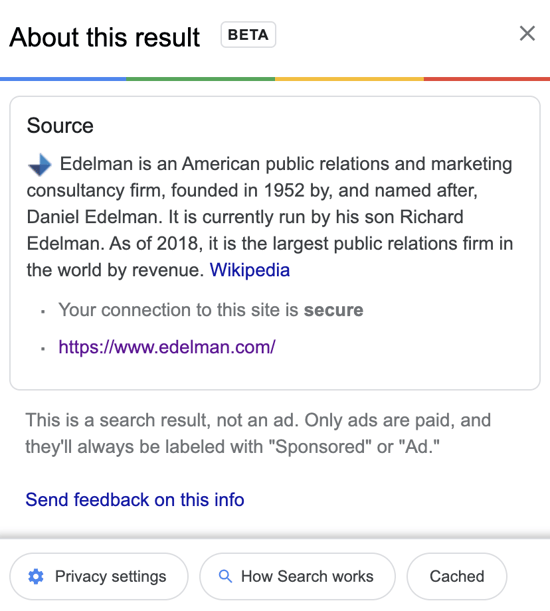Three of the trust signals I've written about previously are having a Wikipedia entry, a security trust badge and a well-worn website domain.
Google reaffirmed the power of these signals with the introduction of "About this result," a beta feature launched at the beginning of this month to provide users more context about a site or company they haven't heard of before. In an environment where visitors have become less trusting of the content they find online, Google's purpose is to empower searchers to vet the sites they are considering visiting before they click.
Here's how it works. Let's say you decide to search for "Dallas PR firms" and you see my agency, Idea Grove, appear in the results. It looks likes this:

As you can see, there are three vertical dots to the right of the url. When you click on those dots, the following popup box appears:

The "About this result" box contains three primary pieces of information:
When the search result happens to have a Wikipedia entry, the box changes. We'll use a global PR firm as an example, since we have a history of analyzing PR firms' Wikipedia entries.
The SERP and popup looks like this:


Basically, Google decides to use the Wikipedia entry for those search results that have one, determining that is a better source of trust than the date of first indexation, which is dropped from Google's popup. The SSL information is still included, however.
Because the "About this result" feature is in beta, we can't know whether or not it will be a long-term feature of Google search results. Either way, though, it clearly indicates that Google considers Wikipedia, domain age and security three valuable attributes for establishing trust online.
Leave a Comment